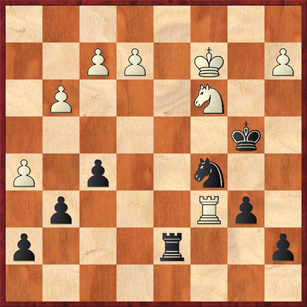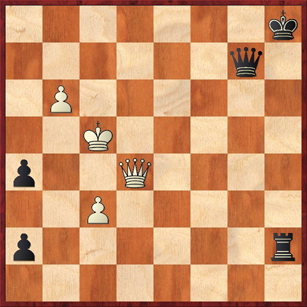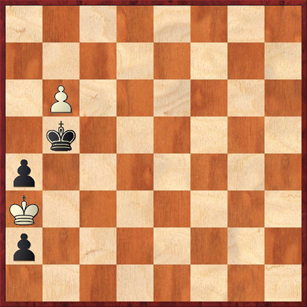Round 2 of the Santa Cruz Cup was yesterday, and already it was a very important game for me: I had Black against the top seed, Juan Diego Perea. As you might remember from my previous “Round Robin Bliss” post, Juande and I agreed to be co-champions last year after a playoff where we tied 1-1 in 25-minute games, then tied 1-1 in 10-minute games, then tied 1-1 in 5-minute games, with Black winning every game. So I guess it was a good omen that I had Black in this game. And sure enough, the pattern continued! But not without a few heart-stopping moments.
I botched the opening beyond belief, and we arrived at the following position:
This is one of those positions where White has an embarrassment of riches. He has two moves that both look terrific: 18. Rd1 or 18. Nd4… but which one to play? After a long think, Juande played 18. Rd1. It’s hard to call this a mistake, but according to the computer 18. Nd4 Nfd7 (which I was intending to play) 19. Ne6! fe 20. Rxe6 is winning. Black has to choose between giving up the rook on a8 or giving up the queen to a discovered check. Black can avoid this with 18. … c6, but he just loses a pawn with no compensation after 19. Nxc6 Nxc6 20. Bxc6.
After 18. Rd1 I played 18. … Nbd7, and again White has a decision to make. We both saw that Black is threatening to win two rooks for his queen with 19. … Nxe5 20. Rxd8 Nxf3+ followed by 21. … Raxd8. But somehow we both missed the fact that 19. Bg5! prevents this combination. Now after 19. … Nxe5 20. Rd8 Nxf3+ 21. Qxf3! Raxd8 22. Bxf6 wins a piece.
Juande said that he intended to play 19. Bg5 immediately, but then he changed his mind because he couldn’t see an advantage after 19. … Nxe5. Finally he played 19. Bf4? instead. The game continued 19. … c6 20. Re3 Nd5, and it was clear that I had “dodged the bullet.”
The next interesting position came on the very last move of the time control:
White has just played 40. h5, and with about 50 seconds left on my clock I played 40. … gh!, which I believe is the best move. The interesting thing is that this is a lesson I have learned from playing the computer. Five years ago, before I bought Fritz, I probably would not have considered a move like 40. … gh because it seems to mess up Black’s pawns too much. But on many occasions I have seen the computer snatch a pawn like this against me, and somehow I never quite manage to get it back. This game provides a beautiful illustration of the theme.
Eventually I won Juande’s a-pawn and he won my f-pawn, and we got into a pawn race where we both made queens. Here’s the position after move 66:
Here Juande played a little too fast and did not put up the best resistance. He played 67. Qxb2+? and lost quickly. The computer spots the move 67. Kf5, which saves White a tempo. Unfortunately, he is still one tempo too slow to draw the game. Here is how the winning line goes for Black: 67. Kf5 Qxe5+ 68. Kxe5 Kb2 69. Ke6 Kc3 70. f7 Ra8 71. Ke7 Kd4 72. f8Q Rxf8 73. Kxf8 Ke4 74. Kg7 Kf3 75. Kh6 Kg4! This position really deserves a diagram:
It’s the ultimate triumph of those lame doubled h-pawns that I created at move 40. The pawn on h7 is key, because it prevents White from playing 77. Kg6, which would be a draw. Maybe I should do a ChessLecture on this theme sometime, called “Doubled Pawns are Not That Bad.”
Whew! What a battle! This was a great birthday present (yesterday was my 49th birthday).
While I’m on the topic of “round robin bliss,” I have to mention that the North American FIDE Invitational in Chicago finished this weekend. My fellow ChessLecturer, David Vigorito, led most of the way, but the 12-year-old wunderkind Roy Robson caught him at the end and scored his first IM norm, with 7 points out of 9! This kid has really taken off in the last year or so. I hope that David will eventually present a lecture on one of Robson’s games from this event, but for now you can check out Eugene Perelshteyn’s excellent lecture from August 23, “Losing to Boy Genius.”






